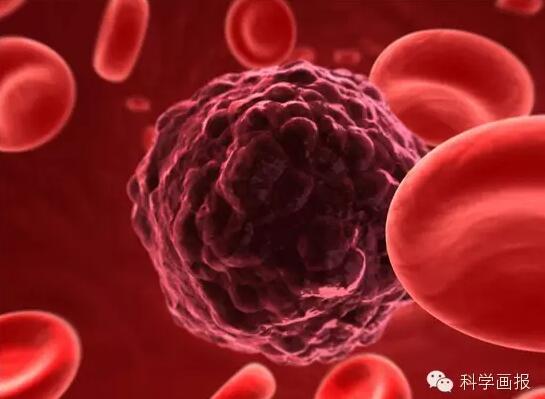
Cancer is no doubt the most notorious disease among all human diseases. Even if at today, cancer is till the first or the second killer of human being in many countries. At present, the main treatments for cancer include surgical resection, radiotherapy or chemotherapy. To be fair, the treatments for cancer are very simple and traumatic. It is undeniable that the treatments are able to deliver certain therapeutic effect but they are inflicting collateral damage to human body.
The latest clinically applicable treatment for cancer is target therapy. The treatment can selectively target the activated signal pathway in cancer cells and hence causes no side effects brought by chemotherapy. Though people hold high hopes on target therapy, target drugs cannot cure cancer patients as the high mutation rate of cancer cells allow them to avoid the suppressed pathway. Hence, target therapy is only able to prolong patients’ life for several months.
That’s the reason why doctors are desperately looking forward the emergence of new treatments for cancer. RNA, nanoparticles, modified viruses and bacteria are utilized to kill cancer cells; the autologous immune system of patients is also used to fight against cancer. Augarten Smil of the University of Southampton said, “I believe we will see a wave of brand new treatments for cancer that are characterized with low toxicity and high efficiency.”
It is understood that some types of cancer are no longer uncurable. For instance, the cure rate of testicular carcinoma has reached up to over 90% and the cure rate pediatric tumor has reached up to 80% in the past several decades. However, the therapeutic effect of lung cancer, gastric cancer and pancreatic cancer, etc. is still not good. It is for sure that the cure rate of all types of cancer is positively correlated with the stage that they are discovered.
The increased cure rate of cancer lies in more available treatments, including the variety of strategies that are under research. Thees treatments are still at early stage of testing and it takes time for them to be clinically applicable. Provided that one of the treatments meet the expectation of people, it will become the greatest advance in the field of cancer treatment following the emergence of chemotherapy 70 years ago.
1. RNA interference
RNA interference is an important natural cell adjustment mechanism that was discovered in 1990s. Its discovery has subverted our understanding of medicine and is regarded a great event in the medical field. RNA interference has provided us with a powerful tool to temporally open or close a single gene. Liberman, a foreman in the field of RNA interference and oncologist from the Medical School of Harvard University believed that RNA interference technology has opened a brand new field for cancer treatments.
However, it’s not an easy thing to transform the high-anticipated technology into effective drugs. The technology involves closing specific genes with short RNA. Nonetheless, human cells are good at detecting short RNA and recognize it as invading virus and destroy it. Liberman mentioned, “The transportation of RNA is the major hurdle at present. ”
Multiple delicate molecular strategies can be developed to stride over the hurdle. One method is to hide RNA in lipid nano particles. ALN-VSP for liver cancer experiment is developed on the basis of the strategy. The drug is targeted at two genes that are related to tumor growth. One experiment showed that 7 out of 37 trial patients showed stopped tumor growth.
Liberman anticipated that the first drug utilizing RNA for cancer treatment is expected to become clinically applicable within 10 years. Liberman commented, “It is surprising that the development rate of RNA inference drug is much faster than that of other drugs though RNA interference in mammal animal cells was only discovered 10 years ago.”

2.Nanoparticles
Molecular science has provided a new opportunity for cancer treatment. Nanoparticle itself delivers no direct therapeutic effect on cancer but it can boost the efficacy of the existing chemotherapy drug. “Nanoparticle has the capacity to change pharmacopathology and allows human being to be able to seek for things that have never been explored in the biological world for the first time.” said Farukh Zadeh, the Director of Nanomedicine and Biological Material of Brighham and Women’s Hospital, Boston, Massachusetts America.
The problem of chemotherapy is that it is toxic to rapidly dividing cells whether it’s cancer cell or not. As chemotherapy is toxic to intestine, skin and immune system, the dosage of chemotherapy drug used is strictly limited. A combination of chemotherapy drugs with nanoparticles enable chemotherapy drugs to be selectively locate tumor so as to increase the dosage used. The reason behind is that nanoparticles tend to accumulate in tumor as cancer blood vessels have more cracks than normal blood vessels.
As of now, some conventional chemotherapy drugs have been sealed into nanoparticles. Moreover, the drugs sealed in nanoparticles can also be combined with antibodies of cancer cell protein so as to increase the targeting of drugs. The method has been applied into practice in recent years. Farukh Zadeh, a member of the research reckons, “We found that extremely low dosage of drugs is able to deliver significant therapeutic effect. Nano technology is not turning bad drugs into good ones but make good drugs better.”
3. Viral therapy
Virus itself destroys human cells. The life cycle of virus is as follows: to infect cells—to promote cells produce more virus until cell death—torelease large amount of new virus to infect more cells. The idea to kill cancer cells with the proliferative ability of virus was generated in 1950s. Viruses of different types are injected into human tumors and sometimes transmission of infection caused by virus might lead to lethal effect.
Today, the research focuses on how to modify virus at the gene level. Virus is only used to infect tumor cells, which might lead to even greater lethality of virus. The purpose of relevant research is to destroy tumor by enabling virus to multiply at a rapid rate in cancer cells, noted Tenney, the Chief Researcher of Cork Cancer Research Center.
A dozen of viruses with different genetic modification are under testing. As of now, the best result is potential immune compound GM-CSG has been transported to patients with melanoma metastases by virtue of herpes virus. 8 out of the 50 treated patients showed tumor disappearance. At present, viral therapy has not been brought into full play and several enhanced viruses are still at the stage of animal experiment.

4. Superbacteria therapy
As a proverb says, the enemy of my enemy is my friend. Infectious bacteria are something that we are trying to avoid. However, if they are able to attack cancer cell, that’s another situation.
Many bacterial strains, including salmonella and escherichia coli, tend to migrate to and enter into tumor. The bacteria hide in the low oxygenated area in the middle of tumor so as to avoid the attack of immune system and they live on the metabolite generated during the rapid dividing of cancer cells. Tanny said similar to viral therapy, bacteria, after genetic modification, can also release toxin or carry the activity localization. Though bacterial therapy is still at early stage compared to viral therapy and only a few experiments testing are undergoing among patients, it has unique advantages. Bacteria are easy to be mass produced and to be modified. Moreover, unlike virus, bacteria can target at tumor stroma (stroma is the gel-like matrix of certain cells, accounting for 80% of tumor).
In 2010, Tanny found that a harmless intestinal bacterium can be used to attack mice tumor and it even works by oral administration. Tanny believed that it is an exciting thing to use natural nonpathogenic bacteria, such as probiotics as cancer cell attacker as human mechanism cannot detect bacteria toxicity and allows bacteria to execute its own function, under which circumstances bacteria can generate anti-tumor drugs in tumor.
5. Immunotherapy
Among all the new treatments for cancer, the most promising one is to look for and destroy ubiquitous cancer cells with the autologous immune system.
Immunotherapy has been a longstanding concept. It was accidentally discovered by William Coley, an American surgeon, in 1990s. Coley found a sarcoma case study of one patient, whose neck tumor disappeared following a high fever from erysipelas infection. In the next few decades, Corley injected mixed bacteria to patients’ tumor with some patients gaining good therapeutic effect.
At that time, Corley did not know the mechanism of the therapy. Today, we get to know that it is because human immune system has continuous supervision and cancer prevention capability. When a cancerous mass is detected, it means that the defense system has gone failure. Some cancer patients might be lucky to find that the tumor spontaneously shrink and disappear. It might be caused by the delayed activation of immune system to have detected tumor.
Since Corley’s departure, the exploration of immunotherapy was once suspended in the 20th century. At present, as people have a deeper understanding of the immune system, the thinking on treating cancer with immune system is embracing a revival. It is known to all that infectious disease can be treated with vaccine as it can activate the immune system. Unlike vaccines for measles and influenza, what cancer treatment needs is therapeutic vaccine as it is used to treat existing tumor instead of preventing the development of a certain disease. It is also one of the important factors that have been impeding the utilization of vaccines for cancer treatment. Despite of that, we can still utilize the specificity and memory of immune system to kill cancer cells and keep long-term effectiveness of vaccine after injection.
From Science Illustrated Magazine